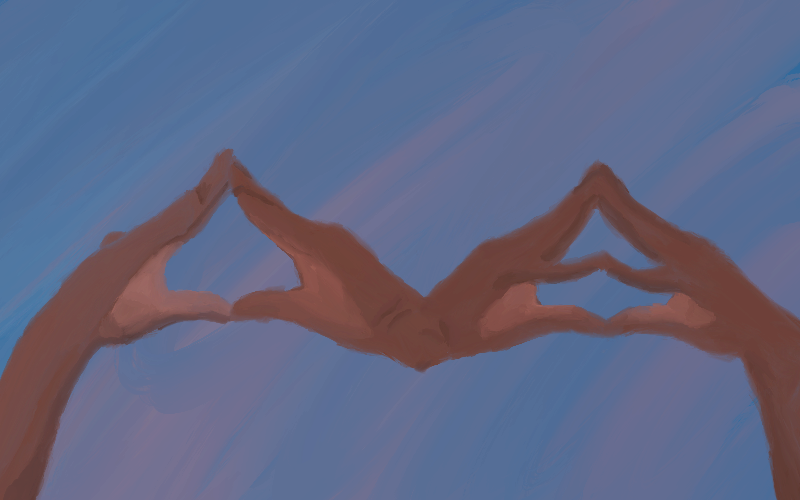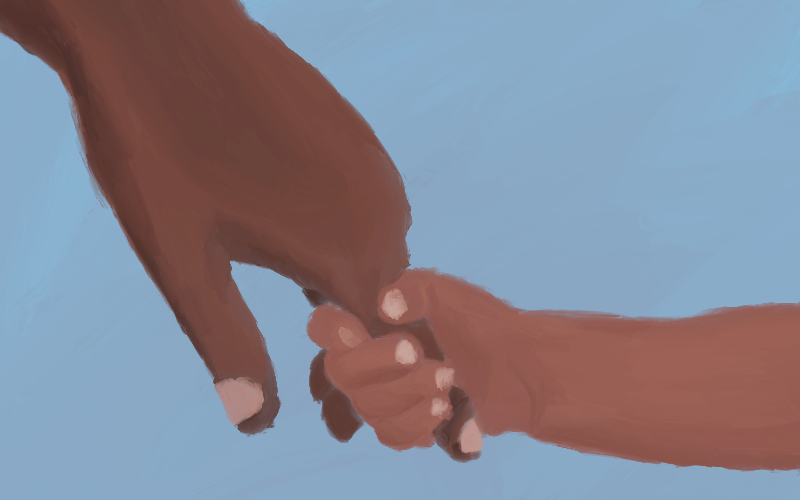This is part of a larger series about objects from a course taught by Marek Makowski, whose essay “Who Are the Writers Now?” kicked off this series. Amanda Crummy’s essay, “Handle with MMA Gloves” was the first in this series. And Emma Duffing’s “The Pillow” is the last.
For my father.
At the end of the arm lies the hand, the extension of the body, mind, and soul. The hand consists of a round flat surface, the palm, and five fingers that protrude from it. Underneath the skin, nearly identical in all humans, the phalanges point upward, forming a subtle downward slope, replicating the shape of the great Egyptian pyramids or heights of Mount Kilimanjaro. On the end rests the shortest finger of them all, the thumb, a stubby structure almost perpendicular to the four remaining digits. Each bone, twenty-seven in all, is pulled together to form a skeletal hand, a shadow of the flesh.

Veins intersect at the heart of the hand, connecting each individual finger, carrying blood from the body through the wrist, gracing the palm and the sides of each finger. Much thicker than water, the blood fills these veins, pulsating through the hand. On the surface, there are several lines and markings, both crossing and intertwining as if they are dancing. Tracing a finger across the skin, we feel the texture, going over each crevice, indentation, and depth of each line. One on top of another, we feel the layers of skin, soft like feathers, worn with calluses, or penetrated with scars. These scars are the histories of past traumas that have now been healed over. The bodily function of healing, simple and natural, creates a new layer of skin. The hand is several parts, some parts untouched, some wounded, some healed over, but collectively complete.
On the finger pads, there are swirls of lines similar to a whirl in a pool, and these prints give each human their own identity. On the backside of the hand, we can see a variety of colors, from pearly white to a golden brown, the representations of different races. As we travel upward to the tips of the fingers, we meet a hard oval-shaped palette, the fingernails. On some hands they’re painted; on others, they’re chipped and chewed, or even perfectly clipped and symmetrical. Despite differing aesthetics, all nails serve the same purpose, sheltering the tender skin underneath from the grueling world.
Each hand is identical yet unique in the way it moves, communicates, and feels. We see hands touch other hands, shaking them, hitting them together, holding them. With each touch of the hand comes a transfer of energy, stemming from the heart of one human into the heart of the other. Hands provide depth to our vision — we can feel what we are seeing, turning image and imagination into a multi-dimensional realm. Artists use their hands to caress a canvas as beautifully envision it. By uniting the index finger and thumb, writers inscribe on paper, forming each letter with precision to create sentences and eventually stories, the stories of the living, dead, and imaginary. We use our hands to speak, creating symbols, tales, and feelings with every gesture. They tell our hidden truths, the emotions we could not put into words. Our hands reveal our inner self, whether good or bad. Their movements strip the heart of its intentions and present them undraped.
One of my first interactions with hands was one I do not remember, the day I was born. Instead, I will tell my parent’s story, the story of two people welcoming their daughter into the world. Only seconds old, and barely eight pounds, I was passed hand to hand, from the doctor to my mother and finally to my father. At the touch of his hands, we connected: I was his Ada, his first daughter, the only girl he had ever wanted. In his hands, I lay still, quiet and peaceful as if his touch transferred a part of him into me.

The hands of my father were one the first things I had ever known, one of the first things I had ever loved. His hands had a history, the history of a Nigerian man heading to America. He used his hands to earn a degree, study, scribble down notes, and flip through pages, all for the ability to do what he loved, repair machinery. He went on to become an aeronautical engineer, for which he used his hands to fix planes, one screw at a time. However, this work was not easy, it tore up the hands, formed calluses, and made them all-around coarse. As a child, I would hold my father’s hand, but instead of feeling the uneven texture, I felt the warmth he carried within his soul. His hands, marred and blemished, were perfect in my eyes. They were nowhere near flawless to others, but it was what he did with those flaws that made them beautiful. His hands guided me on my bike making sure I didn’t stray from the path. The same hands that would catch my tears before they streamed down my face. His hands were twice the size of mine, filled with twice the love and comfort, and each time he hugged me he left a print of himself. Fingerprints are the individual marking of who we are. Lingering long after we are gone, these markings show what we did on this earth and the legacies we leave behind. My father left a fingerprint on my heart. He taught me how to have humility, how to lay down one’s life for others, and how to love with my whole heart. That was his legacy, now living through me. On June 12, 2020, I lost my father. I lost his presence, I lost his body, I lost his hands. My father completed me; half of him was half of me. I was not ready to let go of my other half, to let go of his life, to let go of his hand, but death gave me no other choice.
As I looked upon my father for the last time on this earth, I focused on his hands, laying still and quiet in the casket. Oh, how I yearn to see them come alive again, radiate life, bleed red, wipe my tears, and hold me again. Instead, they stay still, like the water at dawn, still as beautiful now as the first time I saw them. •




